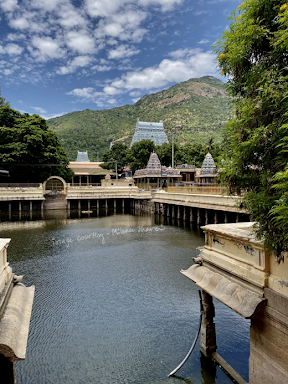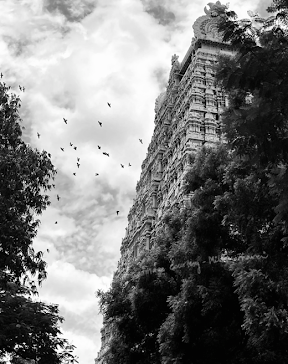Constructs of Divinity
-
Milonee Jhaveri
- Posted on
- 0 comments


“It was still dark, in those early hours of dawn as we made our way along the narrow street leading to temple complex. I remember it being chilly and my friends and I kept mumbling under our breath whether it was all worth it. After 10 minutes of walking in the chilly air finally the Gopuram towered above us. We silently passed through the open gates and found ourselves in the temple courtyard. Just a few minutes later the darkness lifted and we were bathed in a golden glow. Standing before us was the most beautiful and intricately detailed piece of architecture I had ever seen.”
Ancient Indian temples are not just buildings – they are constructs of Divinity
Architecture is not just about designing structures. It is about designing the space and energy that will reside within. This can be done by applying techniques from the ancient Indian science of Vastu Shastra. Vastu Shastra is based on scientifically organising the 5 basic universal elements – earth, water, fire, air and space with Nature and the Universal forces to create a space filled with harmony. The science of design is applied to the immediate environment, specifically climate, it being one of the prime factors. Indian temple architecture reflects a synthesis of several elements ranging from climate, astronomy, sacred geometry, geology and cultural arts.
And this why I believe we go to temples for a sense of calm or to restore a certain lost balance within one self.

“I walked around the temple complex taking in all the elaborate detailing present in all the structures around me. There were doorways, columns, ceilings, and of course the circumambulatory path. What amazed me was that each element, throughout the entire complex was a whole in itself. Every piece was complete with its own character and story to tell, and yet, as I glanced at the entire space as a whole, all the elements fit perfectly together – none taking away from the other.
The concepts of harmony, symmetry and proportions are the core principles involved in temple architecture and I could see these principles rendering beauty and structural stability to every nook and corner of the temple complex.”
These are the very principles that evoke a sense of attuning within the people who enter into a sacred space.

Bringing in the Light
Vastu Shastra speaks about elaborate requirements for the construction of a temple. The site, building materials, dimensions, directions and the orientation of the structure/structures are some, of which the vital ones are Sthala (temple site), Theertha (temple tank) and Murthi (the idol). Many ancient temples are also associated with a tree – the Sthala Vriksham. As for the lighting inside a temple, it is elaborately orchestrated. The entrance, or front porch and the main courtyard is semi-open with maximum light. If the directions and measurements are accurately followed, the sun’s rays are made to fall into the courtyard for at least 6 hours a day. Moving towards the inner layers of a temple, the middle courtyard is designed to receive moderate sun light through a few strategically placed openings. The inner sanctum or the Garbhagriha is constructed with only a single opening which allows light to fall only on the presiding deity, and is also lit with oil lamps on either side. The lighting creates an ambience which helps the devotee hold unwavering focus on the deity within the sanctum.Playing with Sound
Another design principle that is explored in ancient Indian temple architecture is the echo phenomenon. By carefully designing and manipulating open spaces, elevations and semi open structures, echoes are completely avoided within the sanctum and its vicinity, ensuring an atmosphere of absolute quiet, in most temples. In other scenarios like the Meenakshi temple in Madurai and the Vijaya Vittala temple in Hampi, the architects and sculptors displayed remarkable ingenuity by creating “musical” pillars, which when struck at precise parts, produce the seven swaras (octaves).

Bringing in the Harmony
The ancient texts insist on a high degree of precision in measurements. They claim,
“only if the temple is constructed correctly as per the mathematical system in conjunction with orientation and direction can it be expected to function in harmony with the Universe”.
The length, breadth and height of the elements of a temple are inter-related to each other by certain ratios. While adding to the aesthetic, this also gives stability to the structure. For example, by restricting the height of the tower, the Shikhara, to twice its width at the base, the weight of the tower is contained within itself. Another instance is when the size of the bay between two pillars increases, the cross section of the pillars also increase as does the width of the beams that rest on these pillars.
The Core
At the heart of the temple, lies the sanctum sanctorum or the Garbhagriha, which is a cave-like structure. The Garbhagriha is located within the Brahmasthana of the Vastu Purusha Mandala. On the altar, the form of the presiding deity is installed. The sculpture and the carvings on the doors and on the elements around the Garbhagriha is kept to a minimal or is relatively less detailed as not to distract or take attention away from the main deity. The Garbhagriha is lit up with oil lamps and has a ambience of quiet serenity and peace. The base of the entire Garbhagriha called the Adhisthana, has a series of mouldings from which the minimally carved walls of the Garbhagriha rise. The base juts out from all sides and is a strong massive structure as it bears the weight of the Garbhagriha, the path for pradakshina (circumambulatory path) and the weight of the super structure – the Vimana and all its detailing.Architecture influences our lives.
According to our ancient scriptures:
‘An architect with only book knowledge
will faint when called upon to work at site.
And an architect adept at site work
but devoid of the knowledge the shastras provide
is akin to a blind guide leading his followers into a whirlpool.’

“Temple architecture is one instance that shows just how powerful the scientific art of architecture is. This powerful art should not be applied blindly. A true master is one who understands the principles involved in designing a space and combines traditional teachings with the present day scenario to produce a structure in harmony with Nature and the Universal forces.”
– Milonee Jhaveri
30.01.2023
Tiruvannamalai
References
- Sreenivasa rao’s blog on Devalaya Vastu (Temple Architecture).
- Orient cement – Vastu Shastra – The Science of Happiness and Prosperity.
- Witpress – The principles of vastu as a traditional architecture belief system from an environmental perspective.

